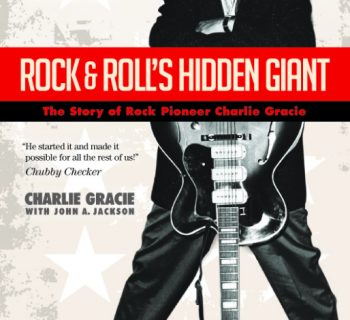Rehearsals can make the difference between a disastrous performance from which people leave early, and a rock solid and riveting performance that brings people to their feet. But a rehearsal isn’t something you “just do.” Like anything else, it requires some planning and attention to detail to achieve the best possible results.
For the most part, everything I say here applies to all types of rehearsals and all types of music. Sure, the details and some of the specific requirements will vary from, say, a classical recital to a heavy metal show–– but the basic fundamental principles of rehearsal remain pretty much the same for both.
What’s the Difference Between “Practice” and “Rehearsal?”
Practice is where you develop your musical skills. Practicing is what all musicians and performing artists do, (or should do) every day to maintain their technical skills on their instrument. This may include playing scales, finger exercises, vocal exercises, or working on a new picking pattern, or a new dance step. Rehearsal is where you apply all these skills to create the strongest possible performance of the material you already know. With rehearsal, you’re taking the songs or a stand-up comedy routine or a new dance and sharpening it for presentation to an audience.
Do Your Homework! The Rehearsal is NOT Where You Learn New Material. That’s What “Practice” Is For!
This is a common mistake among new or inexperienced bands or artists. If you are in a band, each band member should come to rehearsal already knowing the material. If each band member does his or her homework and learns the material before coming to a rehearsal, things will go much faster and much more smoothly. It will be more productive. You won’t have several band members sitting around waiting for one person to work out a new part or a new song.
Of course, like all rules, this rule is not absolute. There are exceptions. If, for example, you want your band to do a slightly different arrangement of a song, or add a harmony vocal part or an instrumental solo that was not part of the original recording, that is the sort of thing that can be discussed and worked out in a rehearsal. You work out the adjustments collectively and play the song that way a few times, and then return to rehearsing the rest of your show.
Generally speaking, the rehearsal is where you tighten up and perfect the show as a whole—NOT the individual songs.
The Difference Between “Rehearsing” And “Jamming”
Here again, a common mistake is for a band to get together and simply play through the songs. They do them in no particular order. They do 40 August 2019 musicconnection.com August 2019 musicconnection.com the same song several times until it feels right. Then they move on to another song, and when they’ve had enough, they pack up and go home. That’s not rehearsing. That’s “jamming.”
Don’t get me wrong—there’s nothing wrong with jamming. It’s fun. And it does help everyone become better players. But it’s important to know the difference between jamming and actually rehearsing a show.
When rehearsing, many people think that if you can get through a song from beginning to end without forgetting a lyric or playing the wrong chord, you’ve “got it.” No, you don’t.
Nothing is ever so good that it can’t be improved, and you’ll never achieve perfection, no matter how much you rehearse. That’s okay. It doesn’t need to be perfect. But don’t settle for mediocre either. Really listen to what you’re all doing in rehearsal. If possible, record rehearsals. It doesn’t need to be a master recording, just a reference. If you can’t record, perhaps you can have someone there who is not actually playing in the band but who knows the music. That person can act as a kind of a sounding board.
At the very least––don’t just listen for anything that sounds pretty good and then tell yourself it’s fine. Listen for things that aren’t as good as they could be. How tight are the harmony vocals? Are all the singers beginning and ending their phrases at the same time? Are they tight? How about the guitar solo? Is it really musically expressive? Does it complement the song? Or is it just fast? Look and listen for things that, while they may not be technically “wrong,” could be even better. And when you find them, work on making them better.
Speaking of vocals: it is not uncommon to have an occasional “vocal only” rehearsal. If the band incorporates a lot of harmony vocals or complex vocal arrangements, just have one person play a melodic rhythm instrument like a guitar or piano while everyone works on the vocals. One advantage of doing this is that it’s much easier to HEAR the vocals this way, in detail. Another is that it’s easier for some people to concentrate on their vocal performance when not playing an instrument. Occasionally a partial rehearsal of this type can be very helpful and productive.
In one of my first bands, a hard rock trio, I used to push for little improvements in our songs and presentation, and the other two would periodically tell me, “It’s good enough the way it is.” My response to that was usually, “There’s no such thing as ‘good enough.’”
A Productive Rehearsal MUST Include:
1. A set list. The songs, in the order that you intend to perform them. This detail is much more important for bands, or even duos and trios, than it is for a solo artist such as a folksinger or a classical pianist. But even the solo artist needs to know what song comes next. Having a set list avoids having the musicians standing around onstage between songs trying to decide what to do. This is a very common mistake that I’ve even seen many so-called “pros” make. It can suck the wind right out of a performance for the audience.
Preparing a set list requires careful thought and planning like trying out songs in different sequences, etc. Preparing a set list is a whole additional topic for a different article. For now, let’s just accept that HAVING a set list that flows well and holds audience interest is critical.
Once you have a set list, rehearse the songs in this order every time. You can always change a set list from one show to another, but you should always HAVE one, and you should follow it unless you have a compelling reason not to.
2. Patter (announcements, introductions, mentioning upcoming gigs, and so on)
I am not suggesting here that every word of your onstage patter should be scripted out in advance or that you should repeat it word for word for every show. In fact, I advise against that. It can make your patter seem stale rather than spontaneous. But there are almost always key details that you need to remember, and even for experienced pros it’s easy to forget to mention these things when getting caught up in the passion and excitement of a musical performance.
ALWAYS MENTION in every show: 1. The name of the artist or band, 2. Any CDs or other merchandise you might have for sale, 3. Your website/social media, 4. Upcoming performances, 5. The names of the individual players in a band, 6. The names of at least some of the songs, or what records they can be found on.
Of course you will most likely have additional patter––an amusing anecdote or a joke, comments about the venue, or the weather, whatever. These things can be more ad-libbed and can be a little less structured. But you must remember to always mention the key elements above. That means rehearsing them. And just remembering to say these things may not be enough. Where do you place these announcements in the set? That’s important too. If you have a song that features a bass solo, that might be a good time to credit the bass player by name. “That was Joe Pescatori on bass!” If you’re about to play a song that is popular with your audiences, that could be a good time to mention what CD the song can be found on. Until you are experienced enough for this to become second nature, I recommend putting notes in the margins of your set list showing when and where these comments should be made.
Having too much patter or not enough can also cause problems and hurt your show. Rehearsing your show with patter included If possible, record rehearsals. It doesn’t need to be a master recording, just a reference. It will help you recognize if you’re making one of these mistakes. Better to correct it during a rehearsal where it does no harm.
3. Rehearse the band in formation. If you’re not a solo artist, having eye contact with the other members of your band can be very important, especially during the first rehearsals. Facing each other and watching each other play helps you develop visual cues, tighten up timing and so on. So in the first few rehearsals, you can relax this rule a little. But once you start feeling comfortable with each other––rehearsing in formation standing in relative position to each other as you would onstage––becomes important.
In the same way you get musically familiar and comfortable with each other the first few times you play a song, rehearsing in on-stage formation will help you get physically comfortable with each other as well. If you are inclined to walk around on stage or make theatrical moves like kicks and jumps, rehearsing this way will help you to plan for these moments and make them run more smoothly, avoiding awkward moments where you bump into each other or get in each other’s way.
Also, it will help you rely less on watching each other. It will help you to maintain that musical tightness while looking ahead toward the audience rather than at each other. Of course, you can still glance at each other periodically during a performance. But your general posture should be facing the audience, not each other.
And, speaking of kicks and jumps…
4. Theatrics. You need to rehearse your set the same way you plan to do it onstage. That’s why you include patter, jokes, storytelling, whatever. It’s the same with theatrics. Will you have someone walk across the stage in front of you juggling at some point during your show? Include that in rehearsals. Kicks and jumps, climbing up on top of speaker stacks, swinging around on ropes, tricks with lights, or smoke and mirrors––ALL of it should be included in rehearsals. The only way to be sure that such things will work smoothly and avoid any unpleasant surprises is to rehearse it––just like the music. It will also help you plan for the inevitable mishaps when they do occur. Suppose your theatrics call for you to toss something across the stage for someone to catch? What if they miss? If something like this happens during a rehearsal, you’ll deal with it somehow, and then you’ll know what to do if it happens during a show.
Which leads me to…
5. Don’t stop for mistakes or technical mishaps. Of course, here too there may be exceptions. If you have an extreme technical issue like the power going out, you pretty much have to stop and deal with it. But if it’s a cymbal falling over or a microphone becoming intermittent, or a string breaking, KEEP GOING, at least until the end of the song! Once you get through the song, you can pick up the cymbal, or switch to a different microphone, or change the string, or switch guitars. But don’t let relatively minor things like this force you to stop the show. If you do you’ll never get that momentum back.
6. Pretend there’s an audience. This applies even to solo artists. As you’re standing there in formation and doing your show, imagine that there is actually an audience in front of you. Say thank you and pause between songs for the imaginary applause. This will probably seem silly at first, and it might make you feel a tad self-conscious the first couple of times you do it, but it will help you with timing of the overall set. As you get used to doing this, it will become more comfortable. And imagining there are people there will also help with the delivery of your songs and theatrics. You’ll be surprised how much it will help when you actually are in front of an audience.
Some Final Tips And Thoughts
Who is the frontperson? This may not be as obvious as it seems. Generally, it is assumed that the lead vocalist is the frontperson. But there have been exceptions. Santana and Kenny Wayne Shepherd come to mind. Whoever the frontperson is, THAT should be the person who handles most, if not all, of the announcements, patter, engaging the audience and so forth.
This role can actually change during the course of a show. There have been bands with more than one frontperson. The Beatles come to mind. Sometimes Paul led the charge. Sometimes John did. Additional examples include Fleetwood Mac, (Stevie Nicks and Lindsey Buckingham) The Who, (Roger Daltry and Pete Townshend) and The Eagles.
When rehearsing, you should all be aware of who the frontperson is and help them to do their job by not competing with them for attention. Singers often talk about “serving the song.” What they mean by this is making the song and not the singer the most important thing. In the same way, this practice of supporting the frontperson “serves the band” and the show.
Evaluating Rehearsals
How do you know when your show is tight, entertaining and ready to perform for the world? Part of the answer, of course, is simply how it feels to you when you rehearse it. Did it feel like a struggle? Were there moments when something seemed awkward or it felt like things were slowing down? It’s easy to just shrug off such moments. Don’t do it! Take a closer look at it.
I’ve already mentioned that recording and/ or videotaping rehearsals provides you with a wonderful tool for review and evaluation. There are some very easy ways to accomplish this, like putting an iPhone on a table or tripod and shooting one continuous video of the rehearsal. There are some very simple and inexpensive stand-alone recording devices now that allow you to simply press a button and record with no need for special microphones, cables, computers, etc. Still, not everyone has the equipment or resources for this.
At the very least, I would strongly suggest that all the musicians, crew (if you have one) and anyone else directly involved in the rehearsal have a meeting afterwards for review and discussion. This needn’t be a formal thing. It can be everybody sitting around, ordering pizza and talking about what they just did. Most likely, as you’re sitting there eating your pizza, the set you just rehearsed is still fresh in your mind, still ringing in your head and ears. This is good.
At this point, any concerns, feelings or just plain thoughts that you might have, no matter how insignificant or benign they might seem, should be expressed. And everyone should listen with an open mind. It’s important not to let such discussions devolve into perceived personal attacks.
It should never be about that.
You’re all there collectively to help each other to produce the best possible show. So remember to take any apparent criticism of your playing or singing with a grain of salt.
More often though, these discussions will revolve around details of the show; not any one person’s playing skills. For example, someone might say “I don’t think we should do, ‘Needle and the Damage Done’ as our first song. I think it’s too depressing. I think we should put it in the middle of the set somewhere.”
One of the most gratifying compliments I ever received had to do with rehearsals. I was in Nashville and had a big showcase performance with a full band. I hired a crew to professionally record and videotape the concert, and I invited lots of music industry people––booking agents, producers, managers, publishers, etc. It was a big deal. We had prepared diligently for this show, incorporating ALL of the points in this article. One of the music biz people in attendance spoke to me after the show and invited me to come to his office the following week to meet with him. When I did, he said this: “Recently another artist with a band invited me to a showcase like yours. He offered me a free tab for food and alcohol, and a free limo ride to and from the show. So I went. If that person had taken all that money he spent on the food and the limo and spent it instead on rehearsals, as you obviously did, he’d have had a much better show. You got it right.”
Take the advice I’ve laid out here, not as a strict set of laws to be followed when rehearsing, but more as a simple guide to making the most of the time you have to get the best results. Good luck to you all! See you out there!
JOHN M. is a professional singer-songwriter, author of the book, Performance Matters, and an instructor and personal performance coach. His book can be found on Amazon at Book, Performance Matters by John M. Contact him at: john@johnm.com.













